Guides • Understanding Publishing
Last updated on Oct 23, 2025
How to Self-Publish a Children’s Book in 6 Magical Steps
Martin Cavannagh
Head of Content at Reedsy, Martin has spent over eight years helping writers turn their ambitions into reality. As a voice in the indie publishing space, he has written for a number of outlets and spoken at conferences, including the 2024 Writers Summit at the London Book Fair.
View profile →If you write for children, self-publishing your children's book can be a great route to take. Increasingly accessible and with a quicker turnaround than traditional publishing, the self-publishing option is becoming more and more attractive.
In this post, we'll walk you through how to self-publish a children’s book in 6 steps.
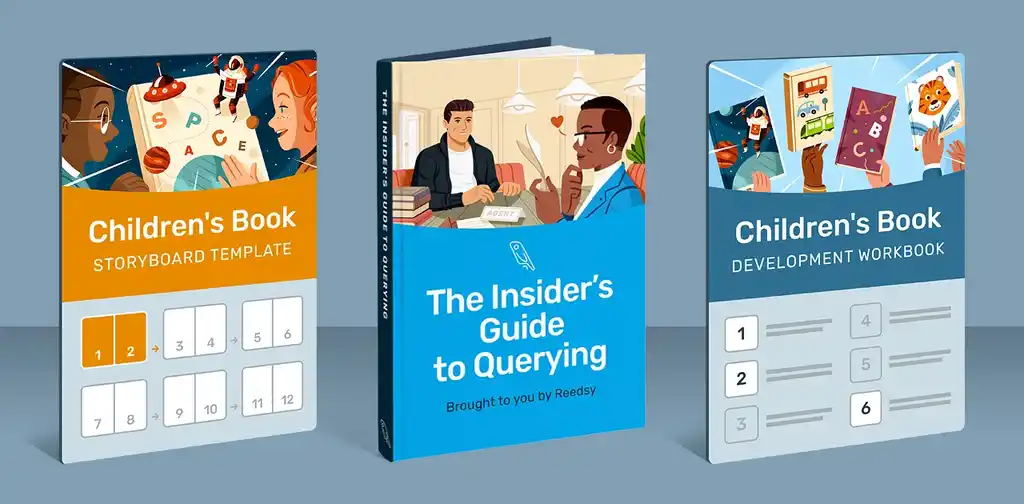
FREE TOOLKIT
Children's Book Publishing Kit
Turn your idea into a book with our workbook, picture book template, and query letter template.
1. Identify the audience for your children's book
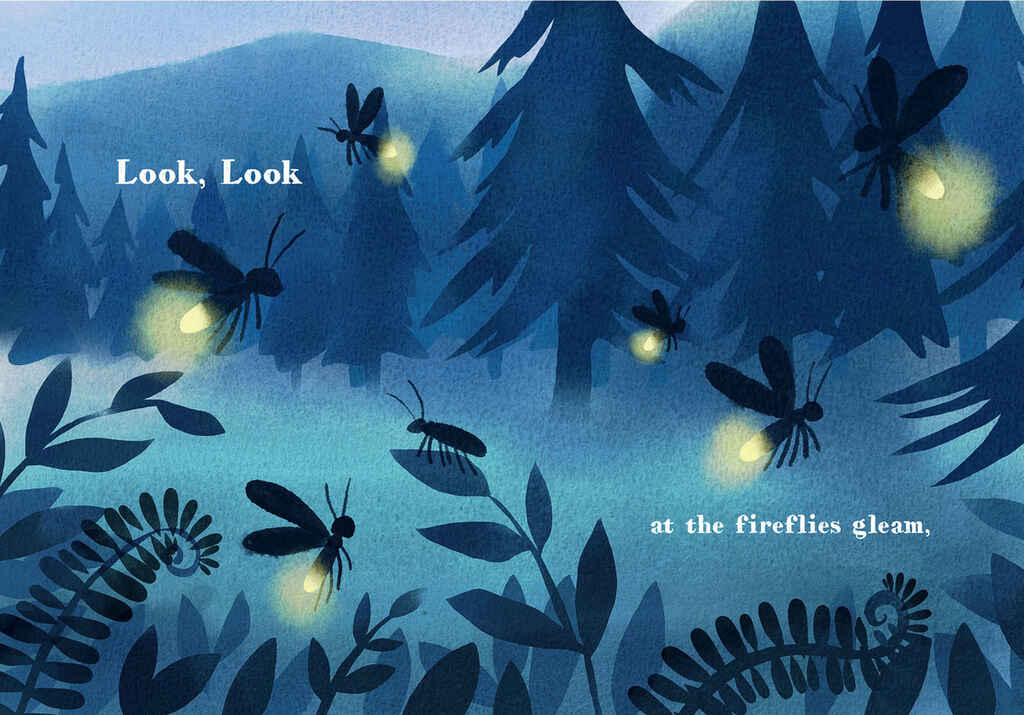
Ideally, you would’ve done this before writing your children’s book, although it’s easy to get swept up in that lightbulb moment of an exciting story idea. In researching the market, you’re essentially identifying your target audience, their preferences, and their habits — all of which can help improve your book and strengthen its reach.
If you’ve already done your research, now’s the time to revise and refine it before moving forward. If you haven’t done much other than revisiting your own favorite children’s stories, here are a few things to ask yourself.
What type of children’s book have you written?
The categorization of your book is the foundation of all the work that follows, from editing to designing to marketing. What you don't want to do is to stray too far from the market conventions of your niche while producing and promoting your book.
The main categories of children’s fiction are summarized in the table below.
| Type of Children's Book | Age Range | Word Count |
| Picture Book/Board Book | 0-6 years old | < 1,000 |
| Early Reader | 6-7 years old | 2,000-5,000 |
| Chapter Book | 7-9 years old | 5,000-10,000 |
| Middle Grade | 9-12 years old | 30,000-50,000 |
| Young Adult | 12-18 years old | 50,000-100,000 |
What are some recent popular titles in this niche?
Browse through the books at your local bookstore or library, or even online on Amazon, to see what new children’s titles look like, what kind of stories they tell, and what topics they cover. For instance, children’s books about diversity are on the rise, as are those about famous historical figures.
Trends like these should by no means dictate your work, but they do reflect the tastes of children as well as the concerns of parents and educators who will actually be buying your book. Keep them in mind as you go along.
Q: What criteria should authors consider when selecting an illustrator whose style and approach align with their story's tone and themes?
Suggested answer
Take a look at an illustrator's portfolio and compare that first with the typical style of the genre of your story-- for example, you'd probably want to eliminate an artist who does bright, colorful character-based romance cover designs if your book is a serious historical fiction. You want to see the mood of your story already in that cover designer's portfolio, usually.
Caitlin b. is available to hire on Reedsy ⏺
2. Edit the manuscript
If you want kids to ask their parents to read them your book over and over again, you need a strong story, which means several rounds of manuscript revisions. Of the many types of editing, the first step for most writers is typically developmental editing, followed by copy editing.
At this stage, ask yourself:
- Do you have a clear story arc?
- Are the characters memorable, with distinct voices?
- What do you want kids to feel when reading your story?
- Is your tone appealing or interesting?
- Is the language too complex or too simple for your target audience?
The best Children's Book editors are on Reedsy!
Sarah K.
Available to hire
I'm a British Asian Cambridge-educated editor and author with over 20 years experience in publishing.
Sirah J.
Available to hire
Careful inspections, thorough explanations, and considerate guidance for inclusive picture books and middle grade novels.
Taylor M.
Available to hire
Over twenty years of experience as both a writer and editor specializing in middle grade and young adult literature.
Once you’ve done your best to refine your book by yourself, it’s time to enlist outside perspectives, starting with beta readers and progressing to a professional editor.
Work with a professional editor
As an indie author trying to tightly control your self-publishing budget, you might be tempted to do all the editing yourself to minimize costs. However, you’ll find that since picture books are so short, editing rates are often quite affordable, especially when compared to full-length novels, or even middle grade books. According to real data from the Reedsy marketplace, the cost to edit an average 1,000 word picture book is $340 for a developmental edit and $210 for a copy edit.
Reedsy editor and picture book specialist Leila Boukarim explains that the more time an author spends with their draft, the more attached they become to it, posing an obstacle when trying to create a book that resonates with people who have no idea who the author is, what their process looked like, and what their intentions were when they wrote it. “All readers want is a good story. Editors, thanks to their industry experience, can help authors answer the question ‘So what?’ and focus on the essence and the heart of the story, cutting away anything that isn’t serving the work, and fine-tuning word choice and structure with the target audience in mind.”
It is these insights that only a specialist children’s book editor can offer that convince most authors to invest in professional editing.
When you’ve got the words perfected, you move on to a very exciting stage of the publishing process — enriching the narrative with illustrations.
3. Hire a professional illustrator

Lively illustrations are a prominent feature among the best children’s books, adorning both cover and interiors with immersive visuals that little readers will want to run their fingers along.
For Reedsy picture book illustrator Caitlin B. Alexander, who specializes in nostalgic, fresh, and colorful picture book artwork, the goal is to bring the author’s created world to life: “I try to do it in a way that adds even more lush detail, fun hidden treasures, and visual storytelling to the book. The art should reflect the mood and audience of the book, and elevate the professional quality even further.”
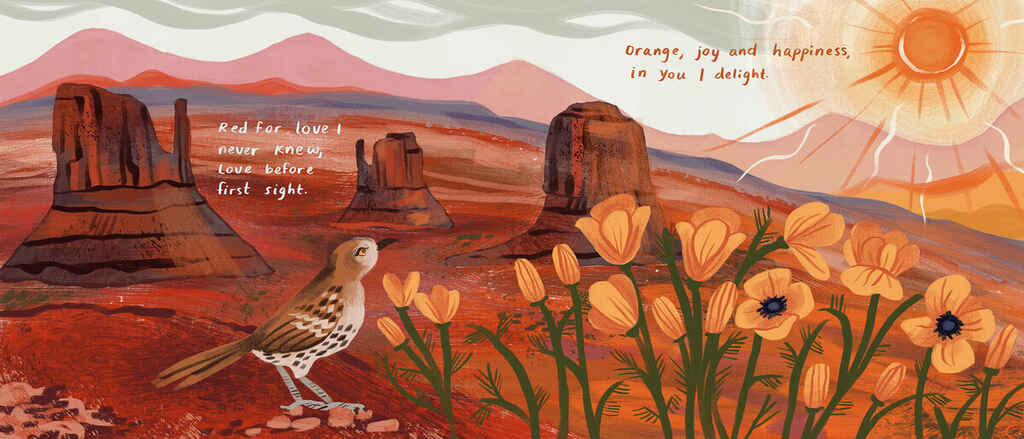
Picture book illustrators, in other words, do far more than just “decorate” your story. They also act as your creative collaborators, helping you organize your story into the 32-page picture book format, planning out what’s going to go in each double-page spread.
For an example of how an illustrator can be instrumental in your book’s success, read about Zenda Walker’s creative collaboration with illustrator, Anthony Foronda, here.
There are countless ways to lay out a double-page spread and its corresponding text — just take a look at these examples from illustrators on the Reedsy marketplace:
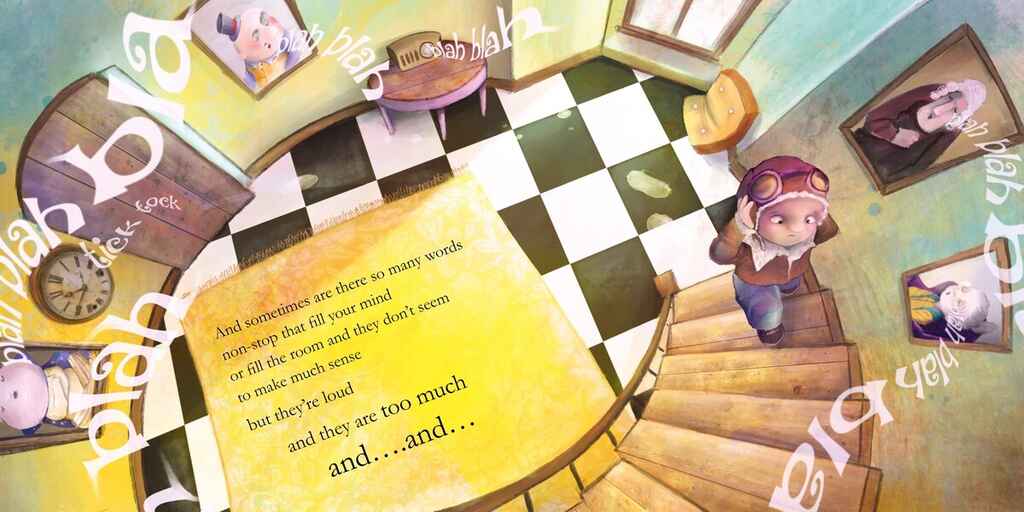
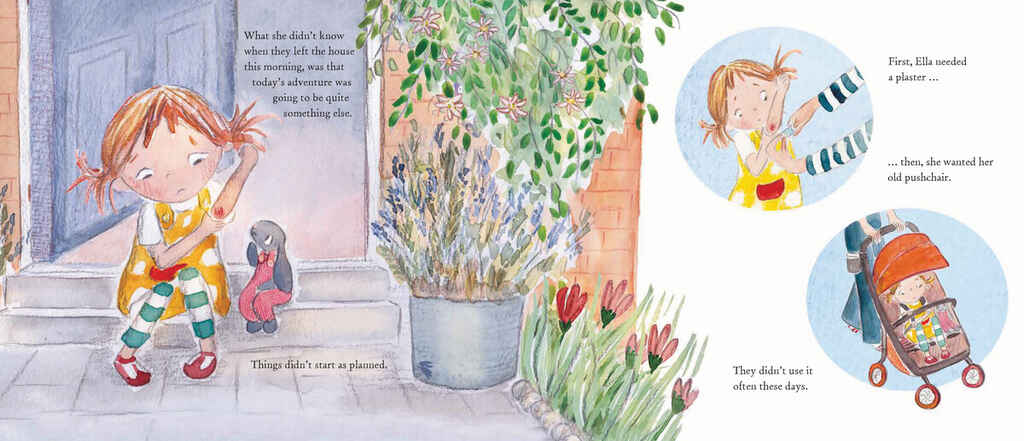
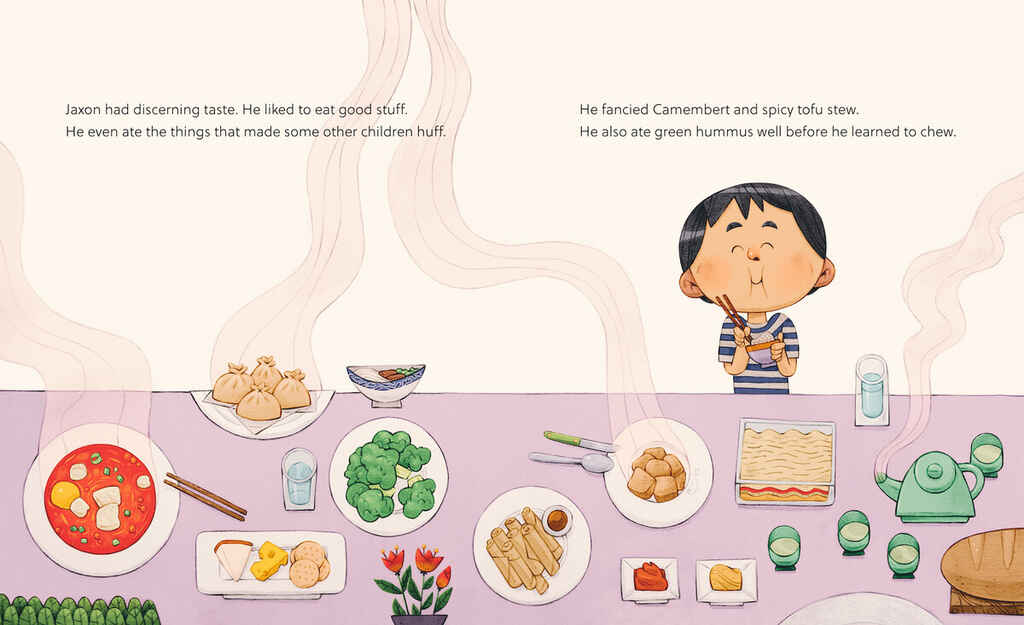
As you can see in the examples above, some illustrations fill an entire double-page spread, with text overlaid in parts of the illustration that are intentionally left uncrowded, while others feature smaller, inset illustrations that allow text to be arranged in the remaining blank space.
These are decisions you’ll make with your illustrator’s help, working to lay out your text across the 32 pages that typically comprise a picture book.
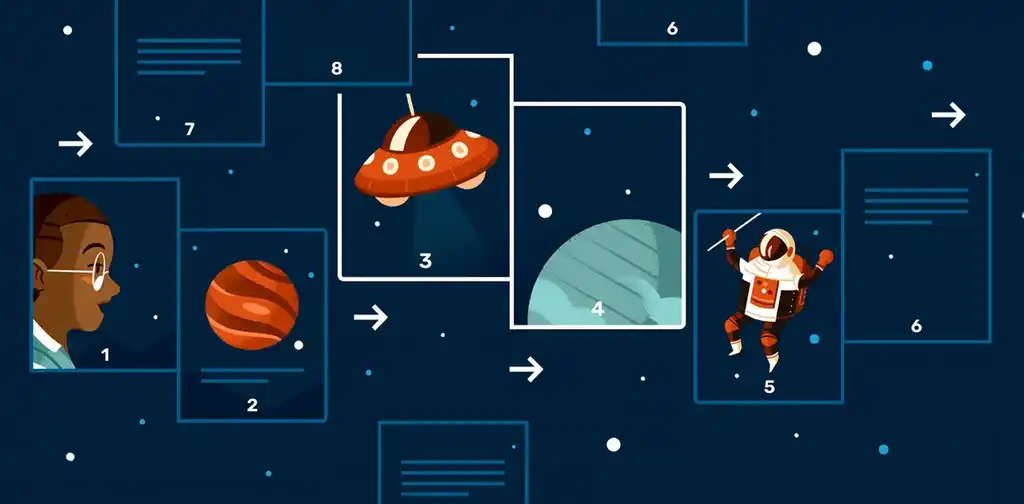
FREE RESOURCE
Children's Book Storyboard Template
Bring your picture book to life with our 32-page planning template.
Where to find an illustrator
Many children’s book illustrators work on a freelance basis, and you can locate them through social media or their own websites. You can also check out Reedsy’s marketplace — we vet every professional on our platform to ensure that every author has the best experience working with an illustrator.
The next post in this guide covers how to find a children's book illustrator in greater detail, so head over to that for an in-depth look at the factors you should consider when searching for the right artist to work with.
Hire an expert
caterina B.
Available to hire
Children’s book & YA illustrator since 2011. Trusted by publishers worldwide to deliver engaging, timeless illustrations.
Yuliia Z.
Available to hire
Welcome to world where vibrant imagination meets the page. I have 7+ years of experience committed to bringing authors' visions to fruition
Sara K.
Available to hire
Children's book illustrator and character designer. Digital artist. Loves anything whimsical, cute, and bright.
If you're curious about how much an illustrator may cost you, we first recommend taking the 10-second quiz below that will give you an estimate based on real data.
💸
What will it cost you to hire a children's book illustrator?
Find out here! Takes 10 seconds.
Not all illustrators will arrange text and format your pages — that is often the role of specialist book designers. The next couple of steps will show you how that can unfold.
4. Format the illustrations
Patching texts and illustrations together the way you would make a PowerPoint presentation, while easy and quick, is not how you keep children engaged. Every element of your book layout design (also known as typesetting), from margin size to typeface, will be extremely important for capturing young readers’ fleeting attention, so make sure you get it right.
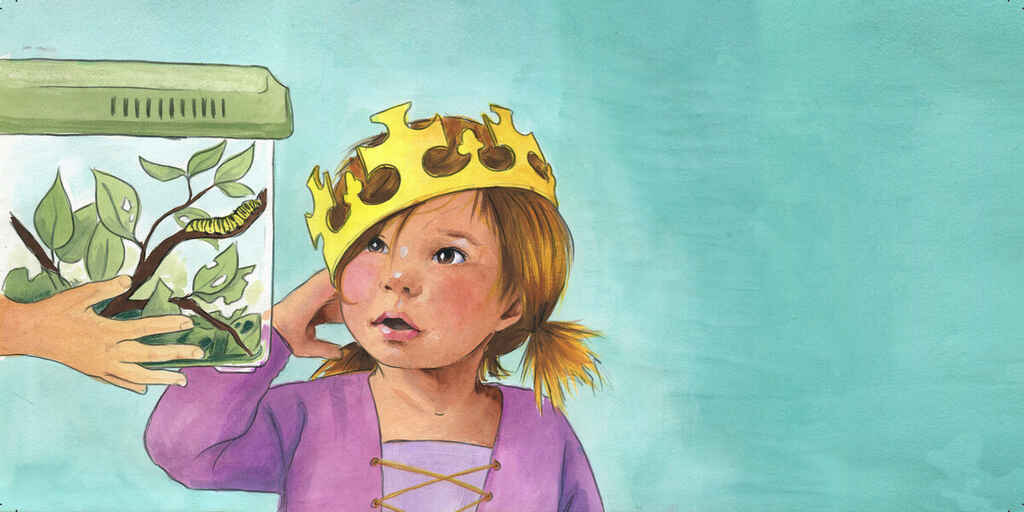
If you’ve commissioned a number of illustrations from an illustrator but they don’t offer typesetting services, your next step is to bring the illustrations to a layout designer — someone who will finalize page layout and typography.
The power of typography
To help you visualize what a layout designer brings to the table, take a look below. These examples were created by illustrators and passed onto professional typesetters to arrange the images and add text, leading to the delightful results you see below.
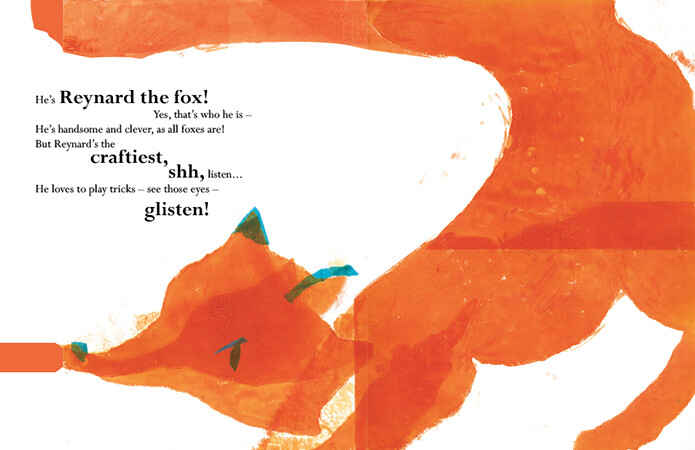
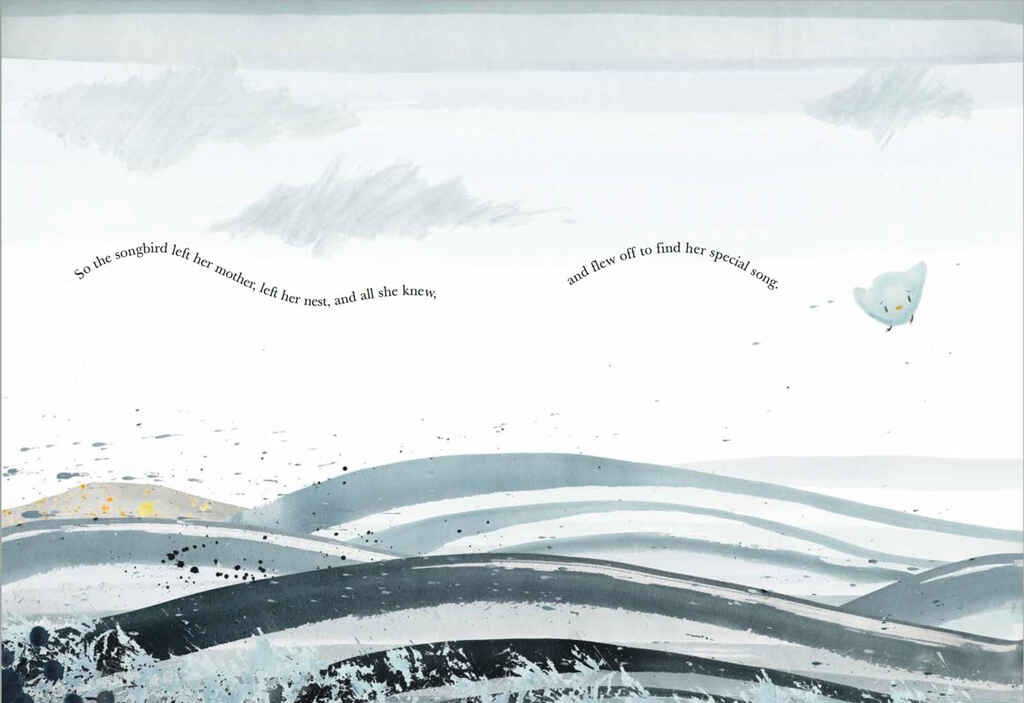
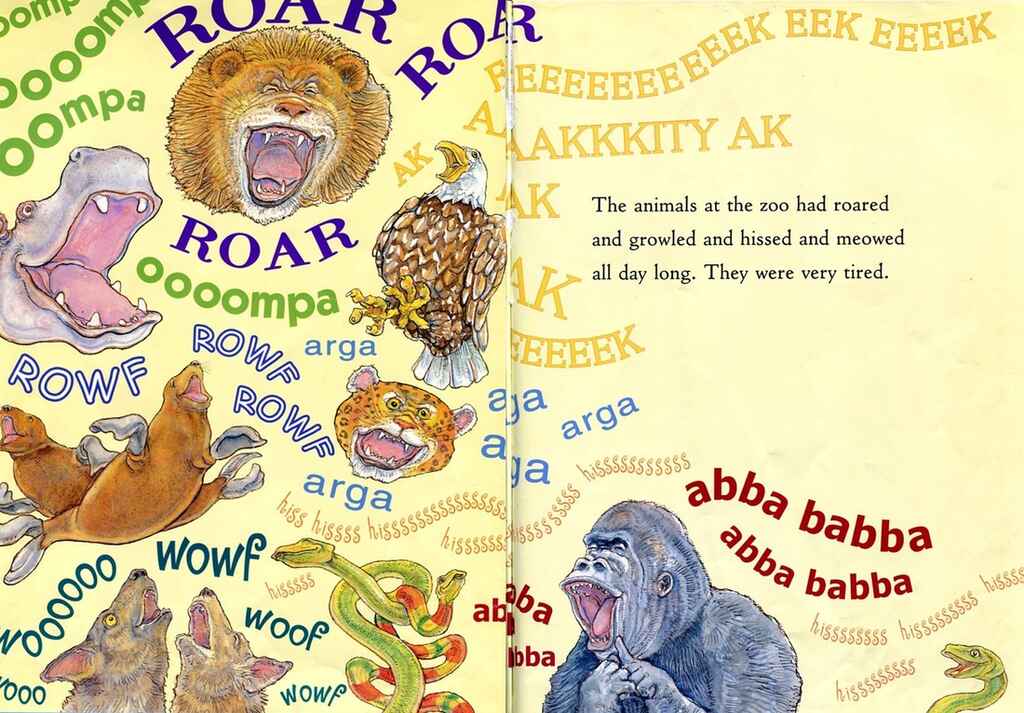
Notice the unusual ways in which all three designers arranged the text around these images? The first uses different font sizes to indicate the excitement of encountering Reynard the fox, the second uses text to poetically trace the songbird’s flight, and the third playfully uses various fonts, colors, and sizes to illustrate the chaotic animal noises coming out of a zoo. Fun, right?
To learn more about the process of bringing existing illustrations to a layout designer, read K.A. Leigh and Derek Roberts’ story here — with Reedsy designer David Miles’ help, they turned their illustration into an attractive picture book cover.
Those trying to DIY this part of the process will struggle — Amazon has tried to make things easier by introducing a formatting tool called the Kindle Kids’ Book Creator, but it doesn’t guarantee professional-looking products. Ultimately, to produce a professional, fit-for-purpose children's picture book or chapter book, you’d still need some design expertise.
Below are some resources to help you better understand the many aspects of interior book design. Dig in and find out about it for yourself — although we strongly recommend collaborating with a professional to ensure a high-quality, thoroughly enjoyable book.
- "What is Typesetting? Your Guide to Interior Book Design" (Click here)
- "What is Typography, and How Can You Get It Right?" (Click here)
- "What are the Standard Book Sizes in Publishing?" (Click here)
5. Pick a publishing company
Congratulations — you’ve finished crafting your book! It’s now time to determine how you’ll share this beautiful volume with the world.
Do you want print books or ebooks? Should you print on demand, or in bulk? Which printing company and distribution channels should you use? What about your ISBN? Let’s go through these issues one by one.
Ebook vs. print
Whether ebooks genuinely help children read is an ongoing discussion between researchers, educators, and parents. The electronic format makes books easier to buy, carry, and interact with (thanks to audio excerpts or animated images). For an author, it provides the chance for wider reach at a lower cost.
On the flip side, ebooks mean more screen time for children, they’re often more distracting, and studies have shown that children retain more information through reading prints. Then there’s the indisputable fact that most of us grew up reading physical children’s books and may find it difficult to imagine one that’s not actually in print.
That said, certain kinds of children’s titles seem well-suited for ebook distribution. For instance, language learning books that schools can use to build children’s vocabulary are more convenient to use and store in digital form. YA novels for older children, who are more likely to own e-readers, are also good ebook candidates.
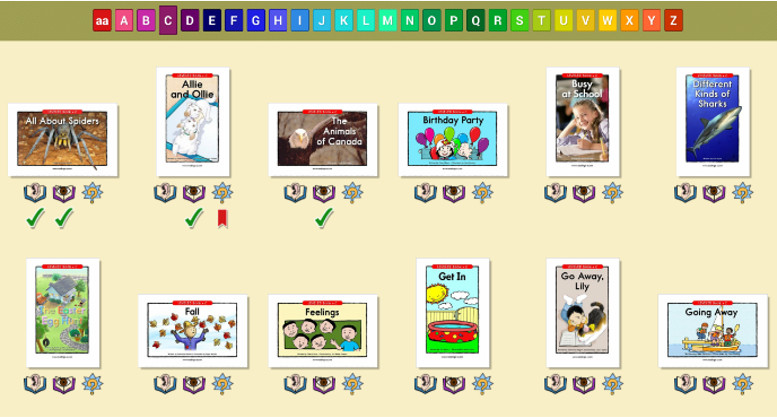
In any case, you can produce printed and ebooks if there’s a market for both. (Note, however, that the two formats will have different ISBNs — you can read all about that here.)
Print on demand vs. offset printing
If you’re set on printing your book, the next question is how that will happen. An indie author can choose between POD and offset printing services, although more companies offer the former service. Nonetheless, we've provided a table here, breaking down the pros and cons of both types of printing to help you decide.
| Print on demand | Offset printing | |
| Pros |
|
|
| Cons |
|
|
Amazon KDP vs aggregators
There are many self-publishing companies that can print and distribute books for indie authors, and Amazon is a common choice. As unsettling as you may find the growing omnipresence of Jeff Bezos’s empire, it’s undeniable that Amazon provides substantial exposure to a wide audience.
Moreover, its publishing division, Kindle Direct Publishing, invites just about anyone, regardless of their expertise, to bring out their own book. The process of publishing on Amazon is quite simple: you create a KDP account, upload your book, fill in the product details, and hit publish.
Our Amazon self-publishing guide offers a comprehensive walkthrough, for those interested. Check it out here.
The advantage of publishing exclusively on Amazon is that you get a higher royalty rate, but if you want to diversify and reach more stores, you can go wide using an aggregator.
6. Build reviews through marketing
You may be wondering whether we’ve strayed from the main question of how to self-publish a children’s book in this step, but rest assured we’re not. Marketing is an integral part of publishing even when you’re taking the traditional route, but especially when you’re doing everything yourself!
As an author, you want not only to boost your book’s exposure but also present a friendly face behind your stories. It’s how you connect to children and parents alike.
This is no easy task. Luckily, bestselling author Eevi Jones has put together a 10-day course on how to market a children’s book, available for free through Reedsy! It covers everything from getting book reviews to leveraging social media — and it’s definitely not something you should overlook.
That said, here are some crucial marketing strategies in children literature.
📚 Get your book into libraries. Parents and educators trust such an institution to endorse valuable titles — sitting on the shelf of a local library is an impressive stamp of approval.
🏫 Go on tours at schools (in person or virtually). Why not go directly to your readers? If you cannot visit a school physically, email them and ask if they’d consider virtual events.
⭐ Get positive early reviews. “Good reviews” don’t just mean five-star reviews — they also include comments from reputable blogs, sites, or newspapers. If you’re wondering how you can buff up your book’s profile, check out our step-by-step guide on how to get book reviews here.
Q: What marketing strategies are most effective for promoting a self-published children's book to the right audience?
Suggested answer
Know exactly who you are marketing to, and your book will sell so much easier than if you try to market to "every parent." Instead of targeting parents of children aged 5-8, be specific and craft your copy and ads to appeal to a niche of parents, such as "Parents of girls ages 5-8 who love to play in the mud and sing silly songs about frogs." The more specific you can be, the better.
Lisa is available to hire on Reedsy ⏺
Making sure you build in enough time into your publishing timeline for an ideal marketing launch is important. This would be at least two to four months in advance of the book's publication date. Creating buzz before the book lands in stores (or online), such as submitting for advance trade reviews from review journals, will help optimize your book for great sales numbers that first week. And hopefully, those initial sales will then prompt consumer reviews early on.
Another important--and easy--marketing tactic for self-published authors is to never underestimate the power of local marketing. An author's community is generally looking to champion someone who has done well or achieved something exciting within their own backyard. A local story or coverage about an indie author's book can go a long way to generating a larger story outside of their community. And sometimes that can even organically lead to amazing coverage in a major newspaper or television segment.
For children's books, it can be challenging for a self-published author to get into schools and libraries unless you are distributed through a wholesaler. Pounding the pavement has its rewards, going to local schools and libraries, offering a storytime or autographing, leaving behind sell sheets for your book. Educators and librarians are huge influencers and their word of mouth is gold for many families and caregivers of young children.
Tara is available to hire on Reedsy ⏺
With good marketing, your lovingly crafted children’s book can touch the hearts of young readers anywhere.
In the next post, we'll talk about the cost of publishing a children's book.

